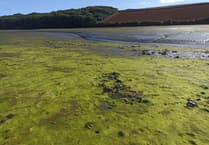Tucked away in the beautiful Devon countryside lies the historic Fingle Bridge. This iconic bridge holds a significant place in Devon's history and has become a beloved landmark over the centuries, for vistors and locals alike.
The origins of Fingle Bridge can be traced back to the medieval period, with the earliest known reference to a crossing at this location dating back to the 13th century. Fingle Bridge was also shown on Benjamin Donn's map of 1765. It's believed that Fingle Bridge has a predecessor, likely made of wood which spanned the River Teign at the same point.
The strategic positioning of the bridge meant it could cater perfectly to trade and travel in the area, connecting communities on either side of the river.
The current stone bridge was built in the 17th century. It is made from local granite. The bridge's enduring architecture reflects the craftsmanship of the time and has become very symbolic of that period in Devon.
Fingle Bridge has been vital for the local economy, facilitating the transportation of goods, livestock, and people. Its historical significance is also intertwined with local folklore and traditions, becoming a timeless emblem of rural life in Devon.
Beyond its practical use, Fingle Bridge has captured the imagination of artists, writers, and nature enthusiasts. The surrounding natural beauty, including the swimmable river and wooded landscape, has made the bridge a popular source of inspiration for photographers and painters. The idyllic area has also attracted many tourists in search of authentic English countryside.
Here is one poem, inspired by Fingle Bridge, written by John Lloyd Warden in 1893.
“
“How clear the rushing waters gliding beneath the three gray arches! how rich in colouring have the lichens and ferns rendered its hoary walls! and, whether we look up-stream to the hills, softly meeting one another with foliage changing from bright green in the foreground to misty blue in the distance, or downward to where the old mill with its moss-grown water-wheel, nestles beneath the woods.. we shall confess that a scene of greater beauty it has never been our lot to view”.
John Lloyd Warden Page, 1893
Today, Fingle Bridge is still standing strong, acting as a peaceful reminder of what remains and the natural splendour of the River Teign Valley. Its rich history and enduring charm make it a cherished landmark that stands as a testament to the heritage and resilience of the Devon countryside.





Comments
This article has no comments yet. Be the first to leave a comment.